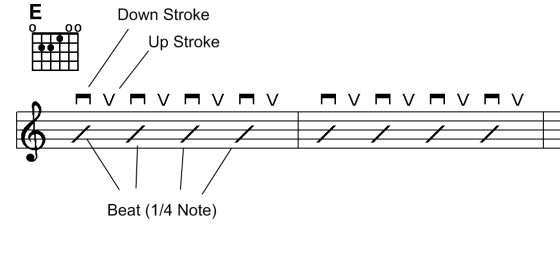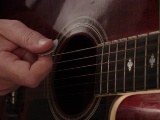E Chord Strumming
Lesson Goals:
♦ Learn the right hand down stroke technique
♦ Learn the right hand up stroke technique
♦ Become familiar with the music staff and notation
♦ Learn alternating down and up stroke pattern
Now that we know how to form the E chord we can begin working on learning strumming techniques.
Start by practicing down strokes as illustrated to the right. For now just work on getting smooth strokes with all 6 strings ringing clearly.
Do this slowly and keep a steady tempo to begin with and then you can gradually speed up.
Next we will work on up strokes. Again, we are not too concerned with speed at this stage. Just play them slow and at a steady tempo until you feel comfortable with the movement.
Now we can put this all together! In the following example we will practice alternating between down strokes and up strokes.
.




